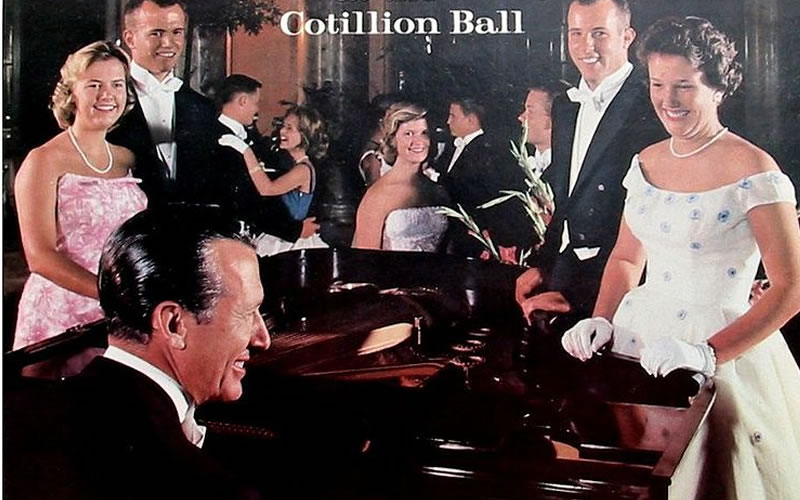S.C. Encyclopedia | The debutante ball as a rite of passage for young girls probably evolved from a seventeenth-century European custom in which aristocratic families presented their daughters at court to help them find suitable husbands. While a debutante may be presented to South Carolina society at an individual ball, tea dance, or other party given by her parents, the social events that accompany the debutante season across the state usually revolve around the official debutante balls held by organizations created specifically for that purpose.
The grande dame of these ball organizations in South Carolina is Charleston’s St. Cecilia Society. Officially organized as a musical society in 1762, St. Cecilia turned to purely social events in 1822, and ever since then its ball has been considered the most exclusive in the state. The second organization appeared in 1889, when a group of Columbia women decided to develop the Assembly Ball as a social event modeled after the St. Cecilia, with the stated purpose of giving “their daughters a dignified background, and a fitting, yet attractive opportunity for them to be presented to society.” The Assembly Ball was followed in 1890 by the Cotillion, organized by a group of Columbia men. Although the spread of debutante balls continued slowly for a while—Greenville’s first Assembly Ball was held in 1923—as the twentieth century progressed and South Carolina’s population grew, so did the number of debutante organizations. Small towns began to have them, and the larger cities added new ones. Some of these societies, such as St. Cecilia, were men’s organizations, while other societies were women’s organizations; others gave couples equal status. The specific criteria for being invited to join a debutante society were usually shrouded in secrecy, but wealth was not necessarily a determinant. Lineage and ties of friendship were more likely to be important.
Although each ball has particular features that may make it slightly different from every other ball, there is a pattern that is the basis for all the debutante ball variants. Each debutante wears a white gown, is presented by her father or another male relative, and curtseys before the members of society to whom she is being introduced. Then she takes the arm of her escort and participates in a Grand March, at the end of which all the debutantes take a collective bow, and the dancing begins.
The procession of debutantes in South Carolina has stopped only for the Civil War and World War II. Although during the turbulence of the Vietnam era it was often difficult for parents to persuade their daughters that a debut was important, debutante balls not only survived that period but also flourished afterward. A South Carolina newspaper might well describe three or four debutante balls held on the same night between Thanksgiving and January. The debut as a way to find a husband may be an anachronism, but the debutante ball as an excuse to have a good time was still going strong in the early twenty-first century.
— Excerpted from an entry by Malie Heider. To read more about this or 2,000 other entries about South Carolina, check out The South Carolina Encyclopedia, published in 2006 by USC Press. (Information used by permission.)




 We Can Do Better, South Carolina!
We Can Do Better, South Carolina!
























